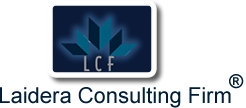The Test of English as a Foreign Language or TOEFL evaluates the ability of an individual to use and understand English in an academic setting.
It sometimes is an admission requirement for non-native English speakers at many English-speaking colleges and universities. Additionally, institutions such as government agencies, licensing bodies, businesses, or scholarship programs may require this test. A TOEFL score is valid for two years and then will no longer be officially reported[1] since a candidate's language proficiency could have significantly changed since the date of the test. Colleges and universities usually consider only the most recent TOEFL score.
The TOEFL test is a registered trademark of Educational Testing Service (ETS) and is administered worldwide.
Policies governing the TOEFL program are formulated with advice from a 16-member board. Board members are affiliated with undergraduate and graduate schools, 2-year institutions and public or private agencies with an interest in international education. Other members are specialists in the field of English as a foreign or second language.
Internet-based Test
Since its introduction in late 2005, the Internet-based Test (iBT) has progressively replaced both the computer-based tests (CBT) and paper-based tests (PBT), although paper-based testing is still used in selected areas.
The four-hour test consists of four sections, each measuring one of the basic language skills (while some tasks require integrating multiple skills) and all tasks focus on language used in an academic, higher-education environment. Note-taking is allowed during the iBT. The test cannot be taken more than once a week.
The Reading section consists of 3–5 passages, each approximately 700 words in length and questions about the passages. The passages are on academic topics; they are the kind of material that might be found in an undergraduate university textbook. Passages require understanding of rhetorical functions such as cause-effect, compare-contrast and argumentation. Students answer questions about main ideas, details, inferences, essential information, sentence insertion, vocabulary, rhetorical purpose and overall ideas. New types of questions in the iBT require filling out tables or completing summaries. Prior knowledge of the subject under discussion is not necessary to come to the correct answer.
The Listening section consists of six passages 3–5 minutes in length and questions about the passages. These passages include two student conversations and four academic lectures or discussions. A conversation involves two speakers, a student and either a professor or a campus service provider. A lecture is a self-contained portion of an academic lecture, which may involve student participation and does not assume specialized background knowledge in the subject area. Each conversation and lecture stimulus is heard only once. Test-takers may take notes while they listen and they may refer to their notes when they answer the questions. Each conversation is associated with five questions and each lecture with six. The questions are meant to measure the ability to understand main ideas, important details, implications, relationships between ideas, organization of information, speaker purpose and speaker attitude.
The Speaking section consists of six tasks: two independent tasks and four integrated tasks. In the two independent tasks, test-takers answer opinion questions on familiar topics. They are evaluated on their ability to speak spontaneously and convey their ideas clearly and coherently. In two of the integrated tasks, test-takers read a short passage, listen to an academic course lecture or a conversation about campus life and answer a question by combining appropriate information from the text and the talk. In the two remaining integrated tasks, test-takers listen to an academic course lecture or a conversation about campus life and then respond to a question about what they heard. In the integrated tasks, test-takers are evaluated on their ability to appropriately synthesize and effectively convey information from the reading and listening material. Test-takers may take notes as they read and listen and may use their notes to help prepare their responses. Test-takers are given a short preparation time before they have to begin speaking. The responses are digitally recorded, sent to ETS’s Online Scoring Network (OSN) and evaluated by three to six raters.
The Writing section measures a test taker's ability to write in an academic setting and consists of two tasks: one integrated task and one independent task. In the integrated task, test-takers read a passage on an academic topic and then listen to a speaker discuss the same topic. The test-taker will then write a summary about the important points in the listening passage and explain how these relate to the key points of the reading passage. In the independent task, test-takers must write an essay that states, explains, and supports their opinion on an issue, supporting their opinions or choices, rather than simply listing personal preferences or choices. Responses are sent to the ETS OSN and evaluated by four raters.

